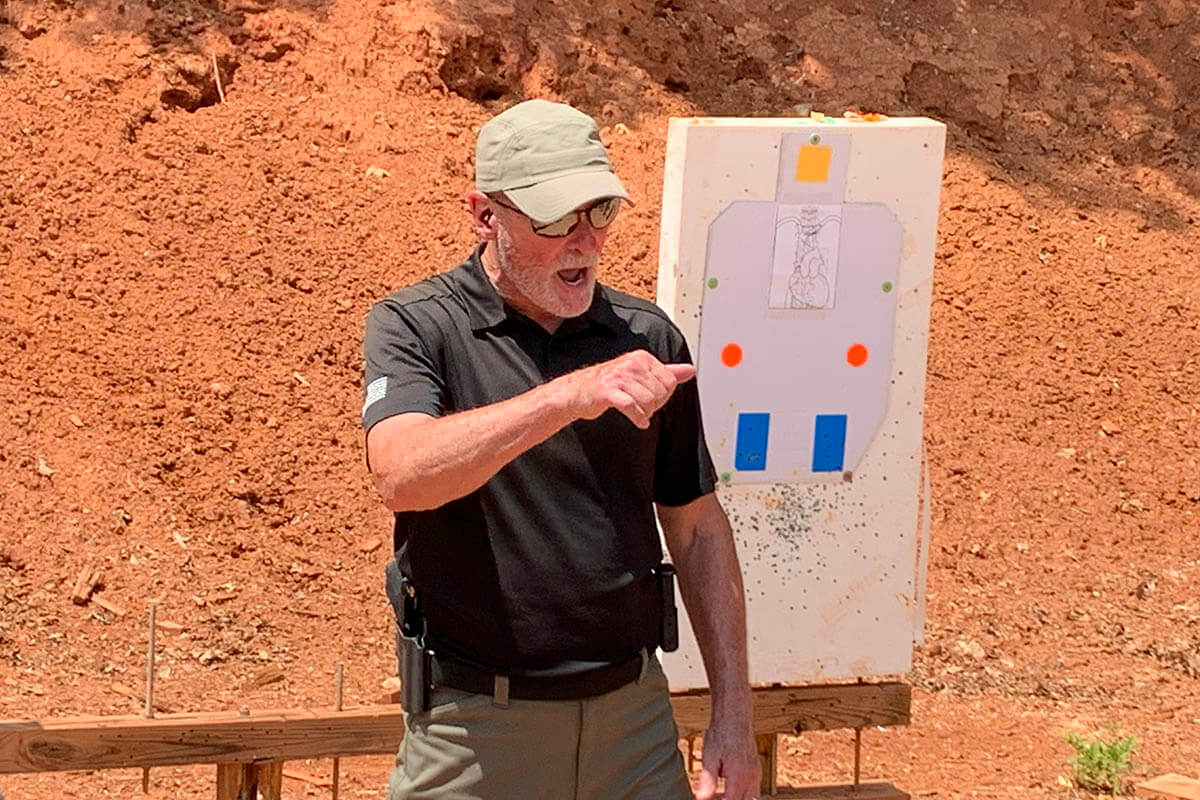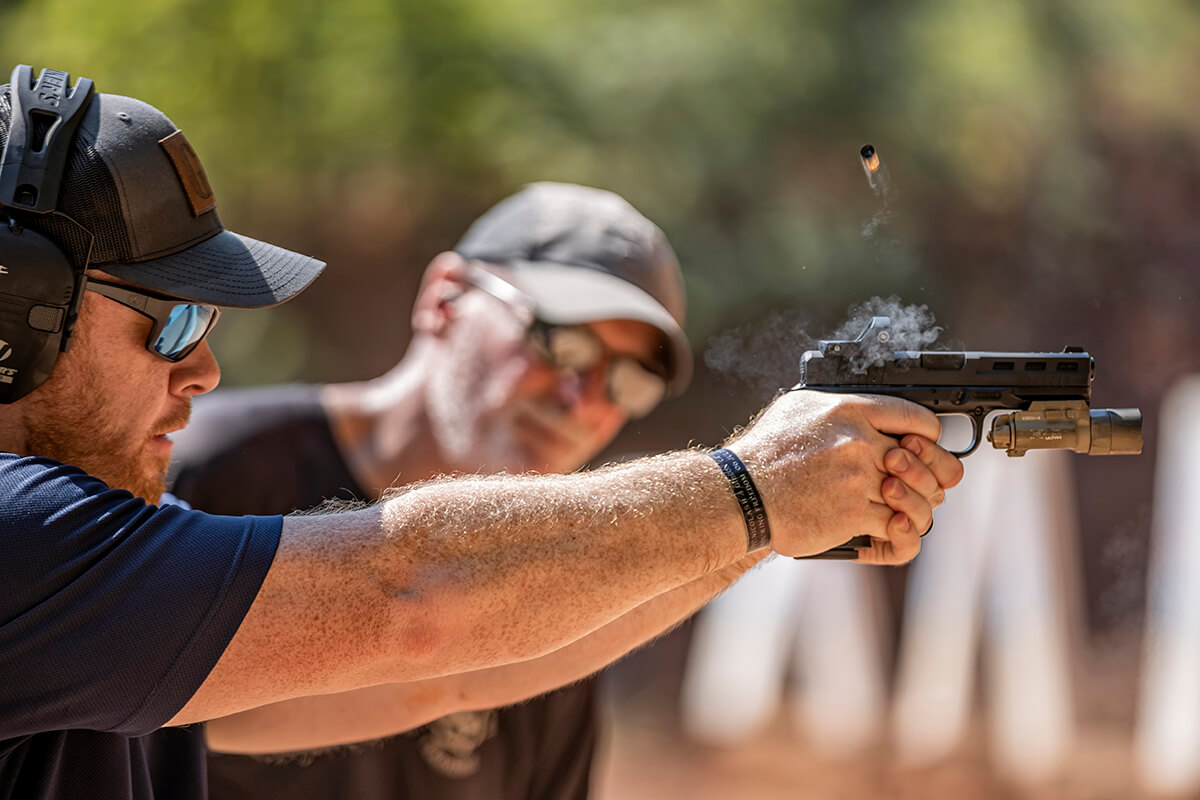Training under the tutelage of a reputable firearms instructor is the best way to improve your shooting skills, but regardless of the instructor’s ability, merely attending their course isn’t enough. To derive maximum benefit from the training, there are steps you’ll need to take before, during and after the course. While not an exhaustive list, these seven suggestions will help you get the most bang for your buck, so to speak.
Research The Course
Don’t decide to attend a shooting course based solely on the reputation of the instructor or course title. Do some research. Start by reading the course description. Are there prerequisite courses or skill sets listed? If you’re a new shooter, you might not be ready for a course titled, “Burn ‘em Down 2.0”.
If you sign up for a course that’s beyond your capabilities, you will likely leave confused and frustrated. Not only is this a waste of your time and money, but it can also have a detrimental effect on other students and make it harder for the instructor. When someone isn’t proficient enough to stay on pace with the rest of the class, the instructor must choose between leaving that person behind or holding up the rest of the class for the straggler to catch up.
On the flip side, if you’re a very skilled shooter, taking a more elementary course isn’t necessarily a bad thing. In fact, you may learn more than you thought you would if you have an open mind and try to do perform the skills as they are being taught, as opposed to the way you’re used to executing them. Remember, even if you’re capable of more, stick to what’s being taught. After all, you paid for the instructor’s insight, which you won’t get if you’re too busy trying to impress.
Familiarize Yourself With The Curriculum
If you’re motivated enough to pay a course fee, purchase ammunition and maybe even fork over travel expenses, why wouldn’t you want to familiarize yourself with the instructor’s shooting philosophy, beforehand?
Many prominent instructors have books, articles, videos and social media posts that highlight portions of their curriculum. This is information you need to have going into the course. The material is often either free or close to it, and it’s a wise investment if you plan to attend a training course.
The more prepared you are going into the class, the more you will get out of it. Also, these items serve as reference material after the course, when the instructor isn’t there to answer your questions.
Pack Accordingly
If there is an equipment list provided for the course, adhere to it. This usually includes:
- Eye and ear protection
- Ammunition (a little extra is always recommended)
- Holster (for a handgun) / Sling (for a long gun)
- Spare magazines (if appropriate)
- A ball cap and appropriate attire for weather conditions
These items are a must. In addition, a folding chair is always nice to have and sunblock can keep you from getting scorched. Depending on the nature of the course, gloves, an inert training gun, or other specific gear may be appropriate.
Also, if possible, bring a spare gun, holster, sling, etc. If one of these critical items fails, you don’t want to be out of the game. And, if someone else’s equipment fails, you can be the hero and help them out. (I’ve been on both ends of that equation.)
Regarding eye protection, you may consider having both sunglasses and clear lenses, especially if the course calls for inclement weather or indoor shooting. I’d recommend quality electronic hearing protection because it protects your ears while enabling you to hear range commands and instruction that you may miss with traditional ear plugs or muffs.
Try to bring more ammunition that the course suggests. The round count is an approximation, and the last thing you want to do is go into ammo conservation mode halfway through the course. If you bring more ammo than you need, it won’t go bad! Take it back home to reinforce the skills you learned in the course (more on that to come).

Empty Your Cup
Regardless of your skill level, when you take a course, you are there to learn the material being taught. Don’t be the guy who takes a course only to try to convince the instructor that there’s a better way. Only by having an open mind and an “empty cup” will you have space to absorb the new material being taught.
Remember, you are taking time out of your life and spending hard earned money on this instruction. Come with a “When in Rome” attitude and don’t be the guy with the big mouth and tiny ears that can ruin the experience for fellow students.
Ask Questions
Don’t hesitate to ask questions. You paid for the course, and it’s intended to make you better. If the instructor seems annoyed by questions, he is either insecure or of the wrong temperament to be a teacher. That said, there’s a time and a place to ask questions. If you interrupt with constant questions, it won’t help anybody and could disrupt the flow of the course.
Take Notes
I’m a note taker. Whether it’s on a laptop, phone or a notepad, I want a record of what was taught to refer to when I’m practicing after the course. If the instructor will provide you with their PowerPoint presentation or at least a handout, that’s great. If he has books or videos for sale, buy them (assuming you felt the course content was valuable).
Video recording an instructor perform a technique is an excellent way to supplement your notes. That said, it’s always a good idea to ask permission before recording and, of course, before posting to social media.

Practice
There’s a reason they say, “Practice is the mother of skill.” In a two-, three- or five-day course, you won’t get enough repetitions to anchor new skills. All you can hope for is to learn the underlying concepts that make a particular technique work. You’ll need to put in plenty of quality reps after the course if you expect to be able recall and perform the skills you were taught under duress.
As a bonus tip, remember to have fun. There are many reasons that motivate us to shoot and train – don’t forget that just having a good time is one of them. If you hit the range with a good attitude and an open mind, your chance of coming away with great memories and new skills increases exponentially.
Read the full article here


